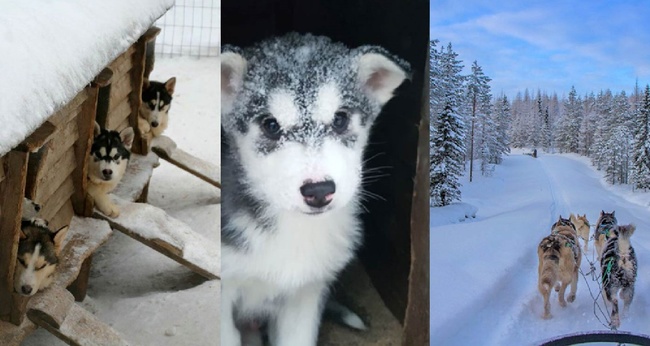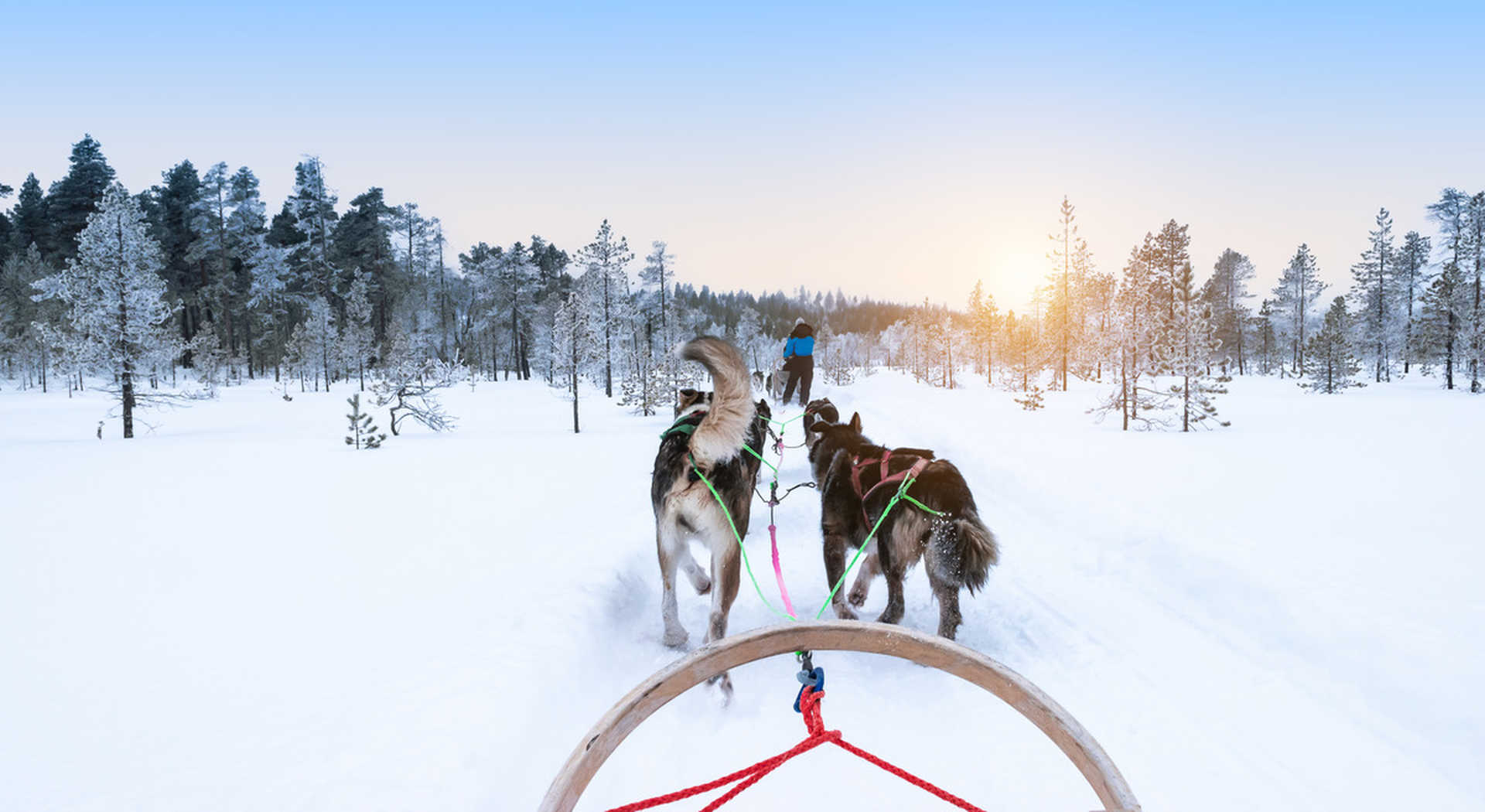The Dogs

The Pack
Mushing Technique
Simple mushing commands:
- Hike - Let's go.
- Gee - Turn right.
- Haw - Turn left.
- Easy - Slow down.
- Whoa - Stop.
Training for dogsledding
Experience
Aerobic Training
Aerobic (or cardio) training will be a key factor in your enjoyment of trekking through snow in particular. Aerobic literally means 'requiring free oxygen' and refers to the use of oxygen to adequately meet energy demands during exercise via aerobic metabolism.
Aerobic exercise, unlike anaerobic exercise, requires oxygen for elongated periods of time. Examples of aerobic exercise would be lane swimming, long distance jogging, walking and cycling. Try to consider the muscles you will be using for dogsledding, for example, your core and arms will be very important for keeping control over the sled, however you will also need to have strong legs to help the dogs pull over tricky ground. Try to include these muscles in your workout; if you aren't lucky enough to be able to get outside to do this, using a cross trainer is a good way of building all your muscles in a gym environment. Building up the time you exercise for, helps these muscles to build stamina whilst also improving your general fitness.
Strength Training
Any training plan should also include strength training. Although not as important as your aerobic training, strengthening your upper body, core and, in particular, your legs, will greatly increase your chances of success. You'll be on your legs for 5 - 7 hours a day, even whilst standing on the back of the sled they will be working, and you therefore need them to be strong enough to take the punishment.
To strengthen your legs we recommend doing the following exercises:
- Squats
- Front and reverse leg curls
- Lunges
- Step aerobics
Remember when doing these exercises to keep watch of your technique. Exercises done with poor technique will more often than not harm you instead of help you. Building upper body and core strength is also crucial as you'll not only be on the move for hours, but you'll also be having to keep control over your sled.
We recommend the following exercises to strengthen your upper body and core:
- Shoulder presses
- Back and shoulder flyes
- Sit-ups
- Kettle-bell rows / swings
Remember to stretch after all exercise sessions! Increasing flexibility will allow your body to recover more quickly overnight after exercising all day. No one wants to try something new after waking up with stiff joints, aching all over!
The importance of stretching
Most sports injuries occur due to poor stretching. This is particularly true in the wilderness where repetitive movements over tough terrain put a lot of stress on joints and muscle. To loosen your muscles and increase suppleness we recommend adopting a regular stretching regime. Spend 10 minutes every morning stretching your main muscle groups. When being active in snowy environments, many people find the key areas prone to injury or stiffness are your hips and knees, building up a good muscular system around these whilst maintaining their flexibility will vastly improve your ability to perform well in the cold temperatures.
Recommended clothing and equipment
Temperatures in Finland can be extremely cold, so please think carefully about what clothes you bring. Although we will provide warm outer layers for your body and feet, the layers you wear next to your skin make the biggest difference. Breathable, warm materials such as Merino wool is perfect for base layers.
- Long waterproof jacket (with a hood, Gore-Tex/Nikwax or equivalent)
- Waterproof trousers/salopettes (Gore-Tex/Nikwax or equivalent)
- At least two pairs of gloves; wool (or similar) under gloves and insulated over gloves
- Sunglasses (UV 400)
- Appropriate warm neck wear
- Warm hat (wool)
- Warm jacket (synthetic or down)
- Several sets of warm thermal underwear (long johns & long sleeved tops)
- Thin socks and 5 or 6 pairs of thick socks
- Thermos flask
Other equipment we provide includes:
- Dog Sled, harnesses and dogs
- Group cooking utensils
- Large warm technical jacket
- Insulated overalls
- Suitable technical sleeping bag ( -25°C)
- Warm snow boots (Sorel)










